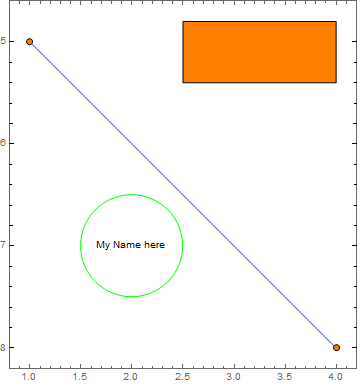Actually there is Sander, if only graphics were organized around graphics primitives instead of everything top down. Here is an example with the ListLinePlot, circle points, Text, a circle and a rectangle all specified in normal coordinates.
It uses the Presentations application, which I used to sell. I use a postfix ReflectionTransform to reflect everything and a CustomTicks routine to rescale the y axis. The only glitch is that Wolfram not only reflects the position of the Text but also the characters. To me this is bad design. I don't understand why anyone would want to do that. In any case, it can be compensated by a pre-reflection.
<< Presentations`
yticks = CustomTicks[Rescale[#, {5, 8}, -{5, 8}] &, {5, 8, 1, 5}];
Draw2D[
{{ListLineDraw[{{{1, 5}, {4, 8}}}],
Text["My Name here", {2, 7}] //
ReflectionTransformOp[{0, -1}, {2, 7}],
CirclePoint[#, 3, Black, Orange] & /@ {{1, 5}, {4, 8}},
Green,
Circle[{2, 7}, 0.5],
EdgeForm[Black], FaceForm[Orange],
Rectangle[{2.5, 5.4}, {4.0, 4.8}]} //
ReflectionTransformOp[{0, -1}, {0, 0}]
},
PlotRangePadding -> 0.2,
Frame -> True,
FrameTicks -> {{yticks, yticks // NoTickLabels}, {Automatic,
Automatic}}]
The resulting graphic:
